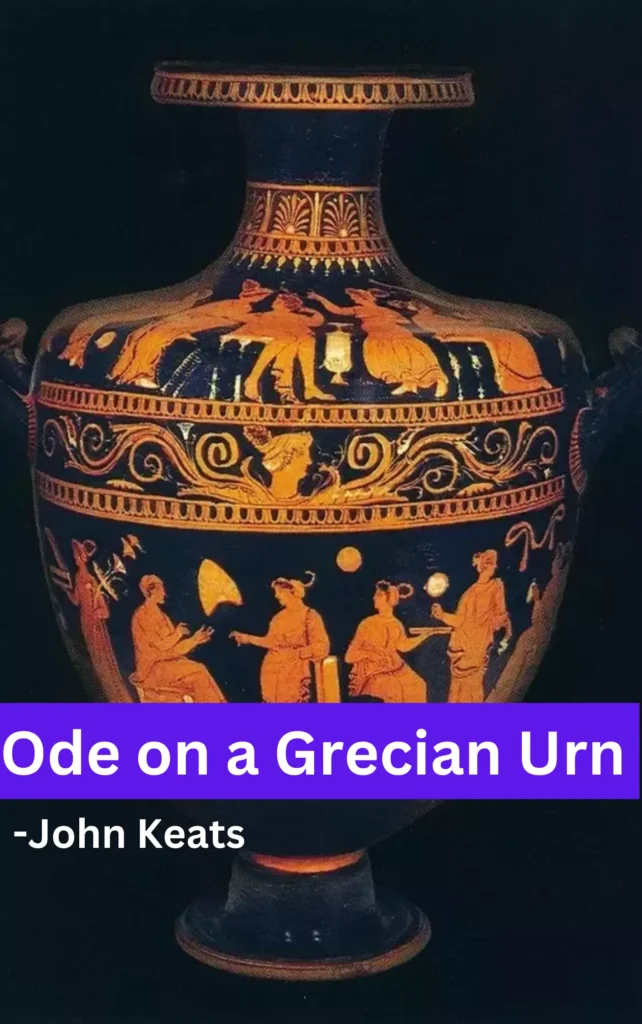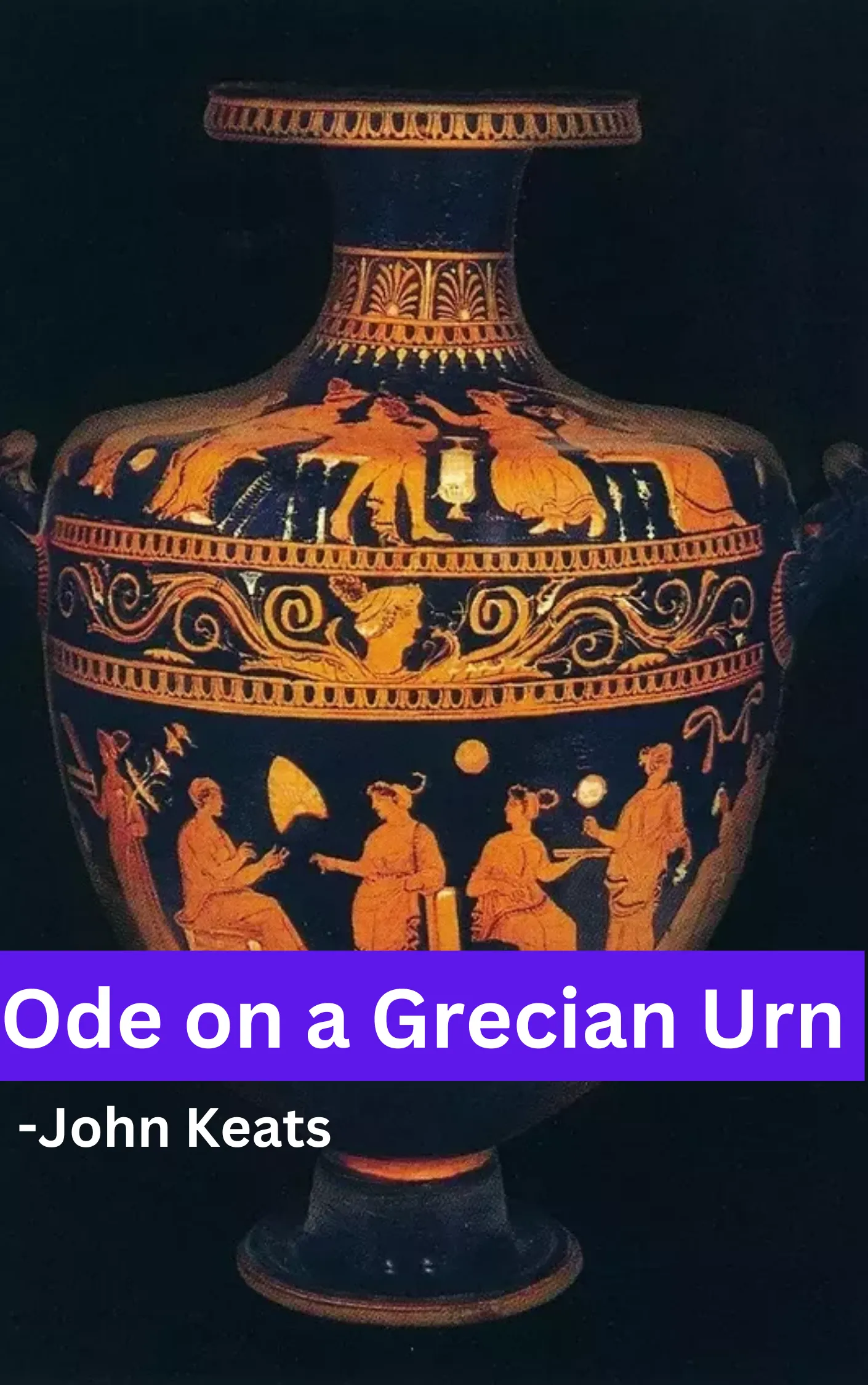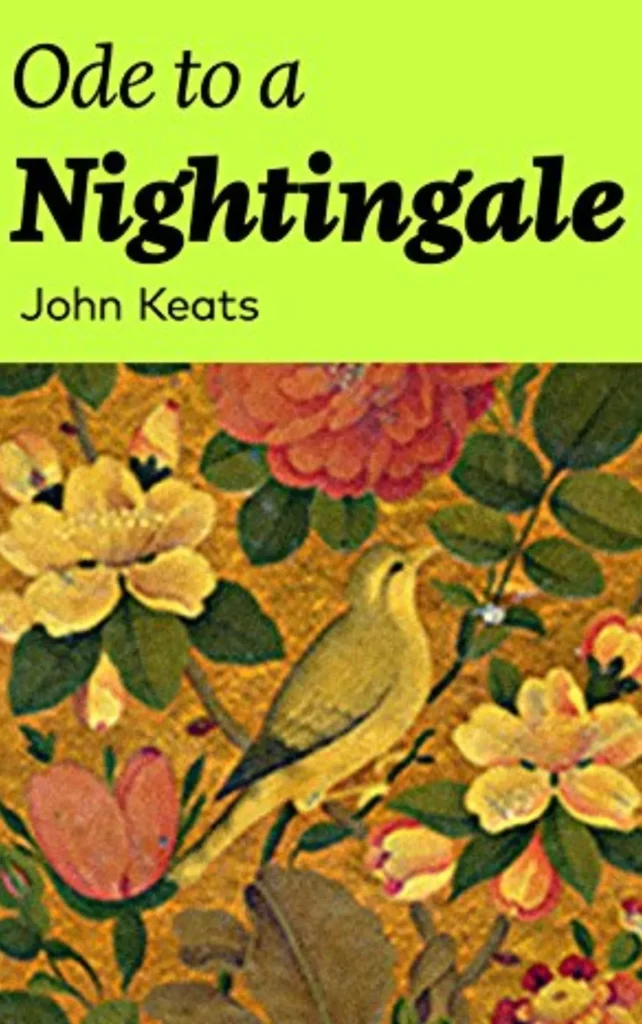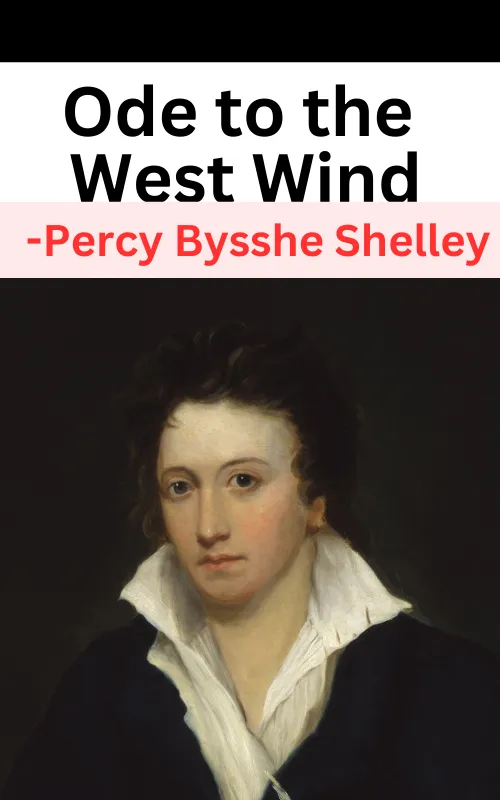
About Poem: Ode on a Grecian Urn
| Title | Ode on a Grecian Urn |
| Author | John Keats |
| Date of publication | 1820 |
| Genre | Ode |
| Theme | The power of art, the immortality of beauty, and the transience of human life |
| Form | Five stanzas of 10 lines each in iambic pentameter with a rhyme scheme of ABABCDECDE |
| Key literary devices | Personification, imagery, metaphor, and simile |
| Famous lines | -Thou still unravish’d bride of quietness, -Thou foster-child of silence and slow time, -Sylvan historian, who canst thus express -A flowery tale more sweetly than our rhyme! |
Themes: Ode on a Grecian Urn
The themes of John Keats’ poem “Ode on a Grecian Urn” are:
- The power of art: The poem celebrates the power of art to preserve beauty and transcendence. The urn is a symbol of eternal beauty, and the speaker imagines the scenes depicted on the urn as being more real than the world around him.
- The immortality of beauty: The poem explores the theme of immortality through the contrast between the eternal beauty of the urn and the fleeting nature of human life. The speaker laments that he cannot join the people on the urn in their eternal revelry, but he finds solace in the fact that the urn will continue to exist long after he is gone.
- The transience of human life: The poem also explores the theme of mortality. The speaker is aware of his own mortality, and he contemplates the fact that all things must eventually come to an end.
Ode on a Grecian Urn Poem
Thou still unravish’d bride of quietness,
Thou foster-child of silence and slow time,
Sylvan historian, who canst thus express
A flowery tale more sweetly than our rhyme:
What leaf-fring’d legend haunts about thy shape
Of deities or mortals, or of both,
In Tempe or the dales of Arcady?
What men or gods are these? What maidens loth?
What mad pursuit? What struggle to escape?
What pipes and timbrels? What wild ecstasy?
Heard melodies are sweet, but those unheard
Are sweeter; therefore, ye soft pipes, play on;
Not to the sensual ear, but, more endear’d,
Pipe to the spirit ditties of no tone:
Fair youth, beneath the trees, thou canst not leave
Thy song, nor ever can those trees be bare;
Bold Lover, never, never canst thou kiss,
Though winning near the goal yet, do not grieve;
She cannot fade, though thou hast not thy bliss,
For ever wilt thou love, and she be fair!
Ah, happy, happy boughs! that cannot shed
Your leaves, nor ever bid the Spring adieu;
And, happy melodist, unwearied,
For ever piping songs for ever new;
More happy love! more happy, happy love!
For ever warm and still to be enjoy’d,
For ever panting, and for ever young;
All breathing human passion far above,
That leaves a heart high-sorrowful and cloy’d,
A burning forehead, and a parching tongue.
Who are these coming to the sacrifice?
To what green altar, O mysterious priest,
Lead’st thou that heifer lowing at the skies,
And all her silken flanks with garlands drest?
What little town by river or sea shore,
Or mountain-built with peaceful citadel,
Is emptied of this folk, this pious morn?
And, little town, thy streets for evermore
Will silent be; and not a soul to tell
Why thou art desolate, can e’er return.
O Attic shape! Fair attitude! with brede
Of marble men and maidens overwrought,
With forest branches and the trodden weed;
Thou, silent form, dost tease us out of thought
As doth eternity: Cold Pastoral!
When old age shall this generation waste,
Thou shalt remain, in midst of other woe
Than ours, a friend to man, to whom thou say’st,
“Beauty is truth, truth beauty,—that is all
Ye know on earth, and all ye need to know.”
Ode on a Grecian Urn Summary & Analysis
Ode on a Grecian Urn” is a celebrated poem by John Keats, and it explores the themes of art, time, and the fleeting nature of human experience. The poem consists of five stanzas, and here’s a stanza-wise summary:
Stanza 1
In the first stanza, the speaker contemplates an ancient Grecian urn, a piece of art adorned with intricate scenes. He marvels at the urn’s permanence and how it captures a moment in time. The urn is a silent, unchanging observer of past events, seemingly frozen in a state of beauty.
Stanza 2
The second stanza delves into a scene depicted on the urn. It shows a group of musicians and lovers in a timeless, joyous dance. The speaker praises the urn for preserving this moment of eternal happiness, untouched by the ravages of time or the sorrows of life.
Stanza 3
Stanza three focuses on another image on the urn, this time a young man playing a pipe beneath a tree. The speaker muses on the unending allure of the youthful musician and the tree’s shade, which will forever provide refuge from the heat. He contrasts this enduring beauty with the transient nature of human existence.
Stanza 4
In the fourth stanza, the speaker shifts to a scene of sacrifice, where a heifer is led to an altar for a ritual. He contemplates the suspenseful and unending nature of the sacrifice and, again, praises the urn for capturing this dramatic moment without ever reaching its resolution.
Stanza 5
The final stanza brings the poem to a philosophical conclusion. The speaker reflects on the limitations of human existence. He acknowledges that the urn’s beauty lies in its eternal stillness, and it will forever be a source of inspiration. The urn is praised as a “Cold pastoral” that continues to tease the viewer with the unattainable beauty of permanence.
FAQs: Ode on a Grecian Urn
What is the meaning of Ode on a Grecian Urn?
The meaning of “Ode on a Grecian Urn” by John Keats is that art can preserve beauty and transcend time, even though human life is short.
Why does the poet say the trees are happy happy?
The poet says the trees are “happy happy” because they are evergreen and will never lose their leaves. This is in contrast to the speaker’s own mortality, and the mortality of all living things.
Why is the urn called a foster child?
The urn is called a “foster child” because it was created by an artist, who is its parent, but it now belongs to time and silence.
What message does the poet want to convey through the poem the trees?
The message that the poet wants to convey is that art can preserve beauty and transcend time.
Why should the musician not be sad in the poem Ode to the Grecian urn?
The musician should not be sad because his music will last forever, even though he is mortal.
What are the metaphors in Ode on a Grecian Urn?
Some of the metaphors in John Keats’ poem “Ode on a Grecian Urn” are:
–The urn as a “bride of quietness” and a “foster-child of silence and slow time”
–The urn as a “sylvan historian”
–The scene on the urn of the young people dancing as a “flowery tale”
–The speaker’s heart as being “high-sorrowful and cloy’d”
What is the negative capability in Ode to a Grecian Urn?
Negative capability is the ability to accept two different ideas that may seem to contradict each other.
What is the conclusion of Ode on a Grecian Urn?
The poem ends with the speaker saying that beauty is the only thing that matters in life.











